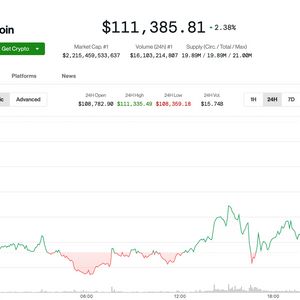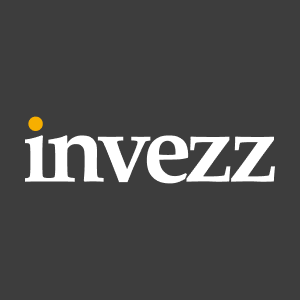Korean Stablecoins: Unlocking a Promising Future for Digital Finance
5 min read
BitcoinWorld Korean Stablecoins: Unlocking a Promising Future for Digital Finance The world of finance is rapidly evolving, and nowhere is this more evident than in the dynamic intersection of traditional banking and cutting-edge blockchain technology. A significant development recently emerged from South Korea, signaling a profound shift: major players, including Woori Bank , one of the nation’s largest financial institutions, alongside gaming giant Wemade, tech innovator Tscientific, and blockchain infrastructure provider DSRV, have reportedly filed trademark applications for stablecoin names. This move isn’t just a ripple; it’s a powerful wave indicating a growing institutional embrace of Korean stablecoins and the broader digital asset ecosystem in the region. Why Are These Korean Firms Eyeing Stablecoins? This coordinated push into stablecoins by such diverse entities highlights a strategic foresight. Stablecoins, unlike volatile cryptocurrencies like Bitcoin or Ethereum, are designed to maintain a stable value, typically pegged to a fiat currency like the US dollar or a basket of assets. Their stability makes them ideal for everyday transactions, remittances, and as a bridge between traditional finance and the decentralized world. For these Korean firms , entering the stablecoin arena presents multiple opportunities: Woori Bank: As a pillar of traditional finance, Woori Bank’s interest signals a clear intent to modernize its services, explore new revenue streams in the digital economy, and potentially offer more efficient cross-border payments or digital payment solutions to its vast customer base. This move could position them at the forefront of digital banking innovation. Wemade: A prominent gaming company, Wemade is deeply invested in the Web3 space, particularly with its Wemix blockchain platform. A stablecoin would seamlessly integrate into their gaming ecosystem, facilitating in-game economies, NFT marketplaces, and user transactions with unprecedented stability and efficiency. Tscientific: As a tech company, Tscientific’s involvement suggests a focus on the underlying technological infrastructure or the development of specific applications that leverage stablecoins. They could be building platforms for payments, decentralized finance (DeFi), or other innovative services. DSRV: A blockchain infrastructure provider, DSRV’s role is crucial. They are likely involved in providing the core technology, security, and network stability required for these stablecoins to operate effectively and securely. Their participation underscores the foundational technical expertise needed for such ventures. Understanding the Significance for Digital Assets in South Korea The entry of these major players into the stablecoin space is a game-changer for the landscape of digital assets South Korea . It signifies a maturation of the market and a growing acceptance of blockchain technology beyond speculative trading. Here’s what it means: Entity Primary Focus Potential Stablecoin Role Woori Bank Traditional Banking, Financial Services Digital payments, cross-border remittances, corporate treasury management Wemade Gaming, Web3 Ecosystems In-game currencies, NFT marketplace transactions, user rewards Tscientific Technology Solutions, Innovation Platform development, integration services, specialized applications DSRV Blockchain Infrastructure, Node Operation Underlying network security, transaction processing, technical support This multi-sector engagement underscores a broader strategy to embed blockchain technology into various facets of the economy, moving beyond speculative investments towards practical, everyday utility. It could pave the way for more institutional capital to flow into the space, fostering innovation and creating new job opportunities. How Will Blockchain Adoption Benefit the Korean Economy? The accelerated blockchain adoption , spearheaded by these stablecoin initiatives, promises a multitude of benefits for the Korean economy: Enhanced Financial Efficiency: Stablecoins can significantly reduce transaction costs and processing times for payments and remittances, making financial services more accessible and affordable. Innovation Hub: By embracing stablecoins, South Korea strengthens its position as a global leader in technological innovation, attracting more blockchain developers, startups, and foreign investment. New Business Models: Stablecoins enable novel business models in areas like DeFi, Web3 gaming, supply chain finance, and digital content creation, opening up entirely new markets. Financial Inclusion: For segments of the population that are underserved by traditional banking, stablecoins could offer a more inclusive pathway to financial services, especially when integrated with mobile platforms. Global Competitiveness: As countries worldwide explore digital currencies, South Korea’s proactive stance with private stablecoins keeps it competitive on the global stage, potentially influencing international standards and practices. This widespread adoption is not just about technology; it’s about building a more robust, efficient, and interconnected digital economy. What About Stablecoin Regulations in South Korea? The filings by Woori Bank and others come at a crucial time for stablecoin regulations in South Korea. The nation has been actively working on a comprehensive framework for digital assets. The Financial Services Commission (FSC) has been particularly focused on establishing clear guidelines for virtual asset service providers (VASPs) and ensuring investor protection. While the exact regulatory treatment for these new stablecoins will depend on their specific design and use cases (e.g., whether they are payment tokens, security tokens, or utility tokens), the very act of filing trademarks suggests these firms are confident in navigating the evolving regulatory landscape or are perhaps even anticipating favorable policies. Key aspects of the ongoing regulatory discussions include: Clarity on Issuance: Who can issue stablecoins and under what conditions? Reserve Requirements: How will stablecoins be backed, and will their reserves be regularly audited? Consumer Protection: Measures to safeguard users against risks like insolvency or market manipulation. Anti-Money Laundering (AML) & Counter-Terrorism Financing (CTF): Ensuring stablecoin transactions adhere to global financial integrity standards. The proactive engagement from traditional banks and large corporations could also provide valuable input to regulators, helping to shape a framework that is both secure and conducive to innovation. The Road Ahead: Challenges and Opportunities for Korean Stablecoins While the outlook for Korean stablecoins appears promising, the journey won’t be without its challenges. These include: Regulatory Nuances: Even with progress, interpreting and complying with new regulations can be complex, especially as stablecoin models diversify. Technological Scalability: Ensuring the underlying blockchain infrastructure can handle high transaction volumes securely and efficiently. Interoperability: The ability for different stablecoins and blockchain networks to communicate and transact seamlessly. Market Acceptance: Convincing the broader public and businesses to adopt stablecoins for everyday use, which requires education and trust-building. Competition: Both from other private stablecoins globally and potentially from a future central bank digital currency (CBDC) if South Korea decides to issue one. However, these challenges also present significant opportunities for innovation. The firms involved are likely to invest heavily in research and development, security protocols, and user-friendly interfaces to overcome these hurdles, ultimately benefiting the entire ecosystem. Conclusion: A New Era for Digital Finance in South Korea The trademark applications filed by Woori Bank, Wemade, Tscientific, and DSRV mark a pivotal moment for South Korea’s digital asset journey. It signifies a clear intent from established players to not just observe but actively participate in shaping the future of finance. The potential for Korean stablecoins to revolutionize payments, enhance financial services, and drive broader blockchain adoption is immense. As stablecoin regulations continue to evolve, and more firms embrace this technology, South Korea is poised to become a leading hub for digital financial innovation, setting a compelling precedent for other nations to follow. This is more than just a technological shift; it’s a fundamental reimagining of how we interact with money and value in a digital age. To learn more about the latest digital asset trends , explore our article on key developments shaping South Korea’s crypto landscape and its future financial innovation. This post Korean Stablecoins: Unlocking a Promising Future for Digital Finance first appeared on BitcoinWorld and is written by Editorial Team

Source: Bitcoin World



